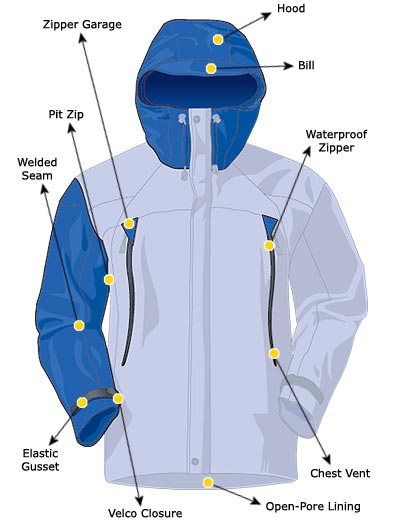• We’ve split up jackets into three breeds: lightweight, midweight, and expedition-strength. Regardless of the flavor you choose, if yours has a hood, you’ll want space beneath it for a helmet. A bill that keeps water off eyeglasses is also nice, as is a means to roll that lid away or remove it.
• To create a multi-ply waterproof-breathable storm shell, manufacturers spray a DWR (durable water-repellent) finish onto a tough face fabric and laminate it to an open-pore lining that wicks sweat.
• A waterproof storm shell also fends off moisture from within. It releases sweat vapor by wicking and venting, usually via pit zips and/or chest vents.
• The best cuffs have both elastic gussets and Velcro closures. Set them once; thereafter, shove a hand through and they’ll close securely over your wrist.
• Welded (not sewn) seams spell a lighter garment that bends with you and is automatically waterproof.
• Soft shells are breathable, abrasion- and wind-resistant coats sewn from a blend of elastic fabrics—usually emphasizing stretch-woven nylon. Though excellent for aerobic pursuits like running, most are not fully waterproof.
• Many soft shells have a brushed interior or fleece that can be worn directly against the skin or over one lightweight layer.
• Soft shells typically save weight by nixing the hood. Those that have ’em are generally heavier, more water-resistant, or both.
Jackets Explained
Sure, it fits. But will your new shell perform? Know your options, and choose with care.

New perk: Easily find new routes and hidden gems, upcoming running events, and more near you. Your weekly Local Running Newsletter has everything you need to lace up! Subscribe today.
